Internal combustion engines are extremely complex and feature a wide array of components that rotate, pump, pressurize, or seal. Many of these components, while technically mounted on the outside of the engine block, serve integral functions when it comes to engine operation and performance. When you open your hood and look at the powerplant sitting there, these “external” parts blend together into a unified whole that essentially forms a modern engine.
In this installation, we’ve created a glossary of external engine parts that will serve as a helpful guide in understanding the function of each component. This is in contrast to internal engine parts, which are housed within the confines of the block and cylinder head.
For thoroughness, we are including external components that are necessary for engine function (e.g., water pump, fuel injectors) as well as components attached to the outside of the engine which are part of other automotive systems (e.g., alternator, power steering pump).
All of them eventually wear out and need replacement – however, none of these external components require engine disassembly in order to access. If you’re performing repairs yourself, knowing what these items do will make referencing repair manuals and ordering parts easier. And if you’d prefer to have a professional shop do the work, understanding necessary repairs keeps everyone honest.
Note that this glossary is confined to definitions for modern overhead-valve or overhead-cam piston engines, both gas and diesel, which comprise 99% of the engines on the road today.
Air Filter
Air filter – an insert piece mounted on an engine’s intake system that contains a fabric, paper, or other type of mesh assembly that traps dust and dirt while allowing air to flow into the engine freely.
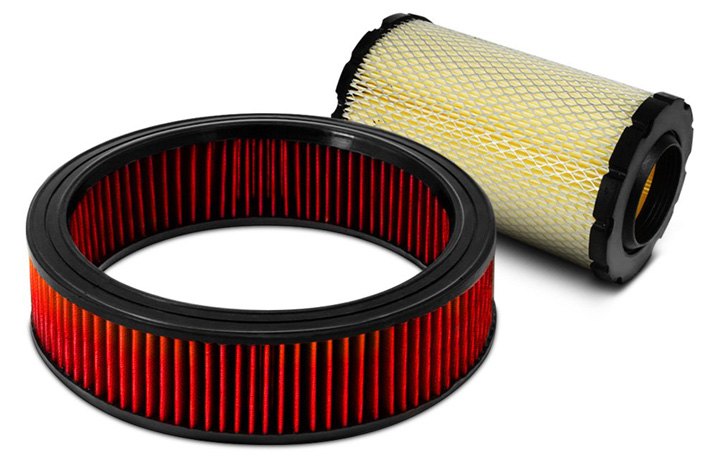
Air Filter Housing
Air filter housing – also described as an “air box”, this plastic assembly houses and protects the air filter from contamination by outside elements. On one side of the housing is an inlet for fresh air to enter, and on the other side is an outlet for filtered air to exit and travel into the engine’s throttle body assembly.

Alternator
Alternator – the part of a vehicle’s electrical system that converts mechanical energy from a drive belt and pulley wheel into electrical energy to operate the ignition system, electrical accessories, and charge the battery. An alternator generates alternating current (AC) and then transforms it into the direct current (DC) used by automotive electrical systems.
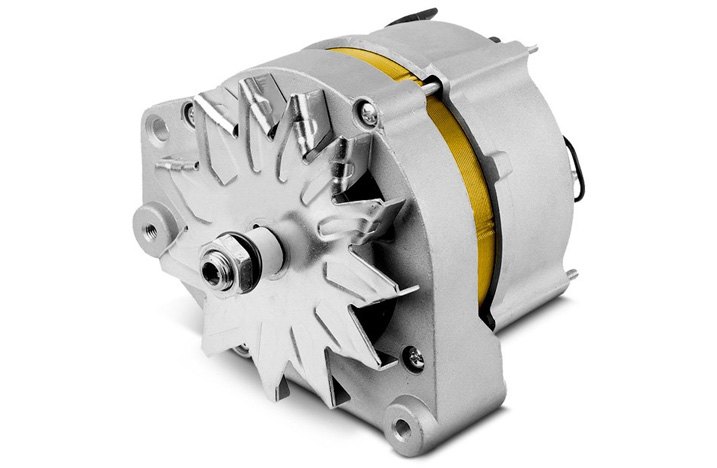
Auxiliary Drive Belt
Auxiliary drive belt – a flexible rubber belt used to transmit power from a crankshaft-driven pulley to another pulley which supplies rotational power to an accessory on the engine such as an alternator, pump, cooling fan, or other.

Because drive belts are subject to constant rotation, load, and heat, they are constructed in a similar fashion as tires. An outer layer of rubber surrounds internal steel and cord reinforcements to minimize stretching and maximize strength when grip is needed under load. A setup where one single drive belt powers a number of devices is known as a serpentine belt.
Camshaft Synchronizer
Camshaft synchronizer – Found on older engines originally designed to use conventional distributors, camshaft synchronizers replaced them - mounting in the exact same locations. They’re driven off the camshafts, and contain sensors that track the position of the camshaft so the vehicle’s engine computer can properly time ignition spark.
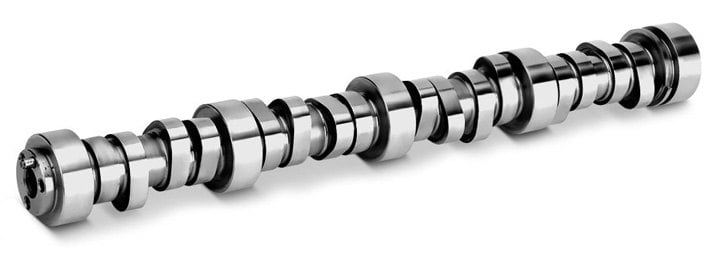
Carburetor
Carburetor – An assembly sitting on top of the engine intake manifold that combines vaporized fuel and air to form a combustible mixture that can be burned in an engine’s cylinders. The carburetor changes the quantity of fuel and air in response to varying conditions such as starting, idling, cruising, and full power.
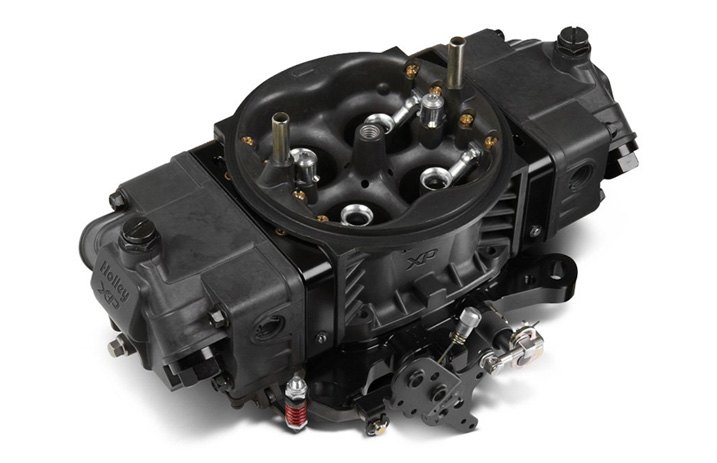
A “downdraft carburetor” is one in which air flows downward through it and into the intake manifold. In a “sidedraft carburetor”, the air inlets bring in air horizontally. And an “updraft carburetor” features a design where the air-fuel mixture flows upward to the intake manifold.
Compressor
Compressor – Part of the air conditioning system, a component driven by a pulley and belt running off the crankshaft which serves to pump vaporized A/C refrigerant out of the vehicle’s evaporator, pressurize it, then deliver it to the A/C condenser. Compressors are typically bolted onto the engine block directly, or by way of a bracket piece.

Direct Fuel Injection
Direct Fuel Injection – A setup where fuel injectors are mounted in the cylinder head instead of the intake manifold assembly (see port fuel injection). Injectors spray fuel directly into the engine cylinder where it then mixes with air delivered from the intake manifold assembly. Most modern vehicles feature direct fuel injection because it produces gains in horsepower and economy.
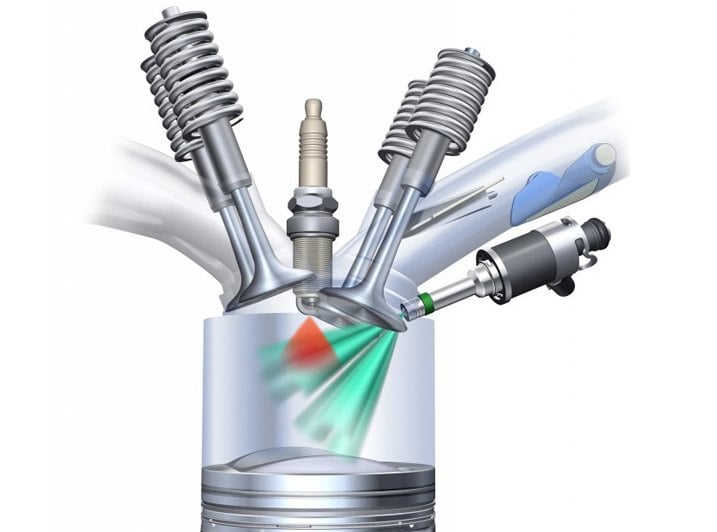
Distributor
Distributor – An assembly with a rotating shaft that delivers an electrical spark to each of the cylinders in a gasoline engine. Typically mounted on the side of the engine block, the distributor’s shaft is driven by a gear on the crankshaft or camshaft. This shaft sits inside the center of the distributor, with a rotor piece at its top that spins under a distributor cap. The distributor is timed to deliver spark to each cylinder exactly when it’s needed to create combustion. For more info on how distributors work, see our related article.

Distributor Cap
Distributor Cap – the replaceable top-most section of the distributor assembly. The cap has a number of terminals around its circumference, equal to the engine’s cylinder count. As an attached rotor passes under each terminal, electricity travels through the cap and out into individual spark plug wires which lead to the spark plugs.

Exhaust Manifold
Exhaust manifold – the first section of the exhaust system which bolts directly over exhaust ports on the side of the cylinder head(s). As exhaust exits the engine, it passes into individual tubes on the manifold for each cylinder. These tubes combine into a single pipe. Inline engines feature only one exhaust manifold, while V-engines have two, one on each side of the engine.
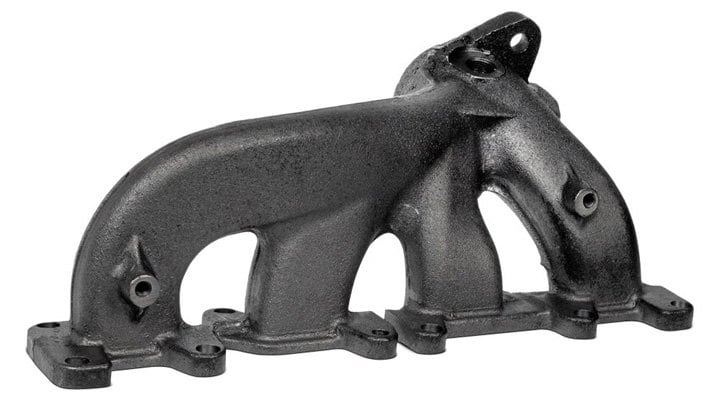
Flex Plate
Flex Plate – Serving the same general function as a flywheel, a flex plate is a metal disc mounted outside the rear of the engine on the crankshaft where it exits the engine block. Created for automatic transmissions, flex plates are typically lighter and thinner than flywheels because they’re designed to flex as rpms increase to provide better mating with the curved surface of a torque converter. Teeth along the perimeter of the flex plate engage an electric starter motor to crank the engine until it begins firing on its own.

Flywheel
Flywheel - a large, heavy metal disc mounted outside the rear of the engine on the crankshaft where it exits the engine block. Its purpose is to smooth engine vibrations and serve as a mating piece for a manual transmission clutch disc. Teeth along the perimeter of the flywheel also engage a small electric starter motor to crank the engine until it begins firing on its own. See also flex plate for automatic transmissions.
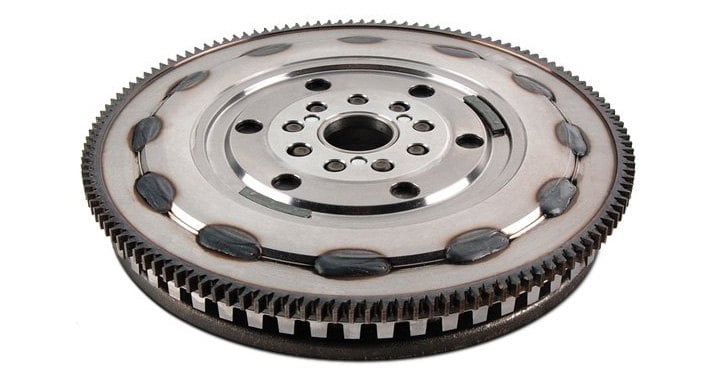
Fuel Injectors
Fuel injectors – mounted on the cylinder head(s), these are mechanical or electro-mechanical devices that spray fuel in metered amounts into the intake manifold or cylinders of a fuel-injected engine.
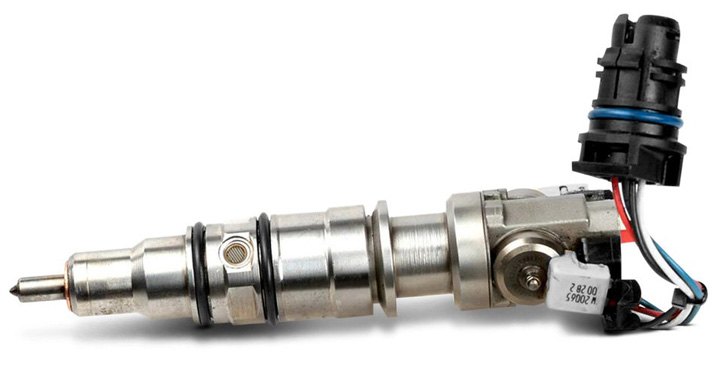
Fuel Injection Pump
Fuel injection pump – typically found on diesel engines, but also used on older mechanical gas engine fuel injection systems, these are driven off a gear from the engine. After drawing fuel out of a line leading from the fuel tank, the pump serves to further pressurize fuel as needed before delivering it to the injectors.

Fuel Rail
Fuel rail – a section of fuel line that feeds fuel to the fuel injectors located at individual cylinders.

Glow Plug
Glow plug – an electrical plug, similar to a spark plug, that preheats the combustion chamber of a diesel engine to assist in cold starting, after which the plug shuts off and stays off.

Harmonic Balancer
Harmonic balancer – a pulley which bolts to the front of the crankshaft. As it rotates with the crankshaft, its mass helps dampen crankshaft vibrations (also known as a vibration damper).

Ignition Coil
Ignition coil – a pulse transformer designed to boost the 12 volt “primary” voltage received from the battery or alternator to 20,000-30,000 volts upon the opening and closing of the contact points.

It contains a primary winding of heavy wire that’s wound in a circular configuration about 200 times. A secondary winding made of much finer wire may contain up to 22,000 turns. The current through the primary winding produces a magnetic field in the coil, which produces a much larger current in the secondary winding.
Older vehicles are equipped with a single ignition coil that sends the high voltage to the distributor to be disbursed to each spark plug. Newer vehicles without a distributor will feature one ignition coil per cylinder – these slot in place on top of each spark plug.
Intake Manifold
Intake manifold - an integrated assembly that sits atop the engine, consisting of a series of tubes which distribute the fuel/air mixture to each and every cylinder. On V-shaped engine blocks, an intake manifold typically sits between the two cylinder banks while inline engines may mount the manifold on the side of the cylinder head.
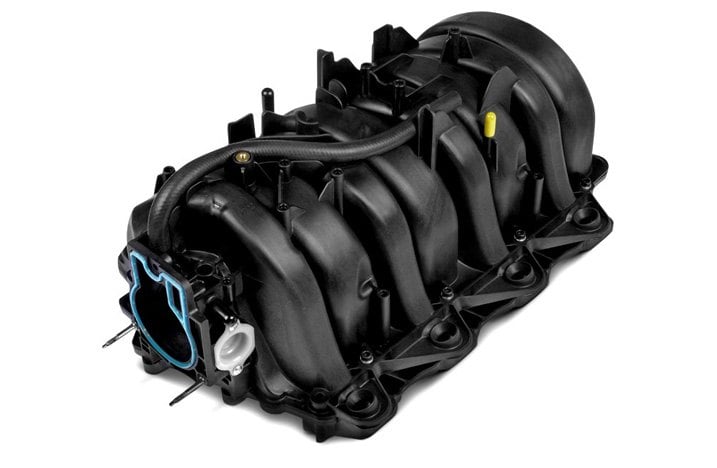
Intercooler
Intercooler – A small heat exchanger (similar to a radiator) used on turbocharged or supercharged cars. It reduces the temperature of the intake air delivered through the turbocharger or supercharger to the engine.

Motor Mount
Motor mount – rubber and steel supports bolt the engine (and transmission) to the vehicle frame or unibody. These supports absorb the twisting movements of the powertrain caused by engine torque and abrupt transmission shifts. Additionally, they isolate the passenger compartment from vibration and noise. Some motor mounts even feature cavities filled with hydraulic fluid to enhance smoothness.

Oil Cooler
Oil cooler – a small heat exchanger used to lower the temperature of engine oil or transmission fluid. Racecars use variations of oil coolers for manual gearbox and differential lubricants as well.
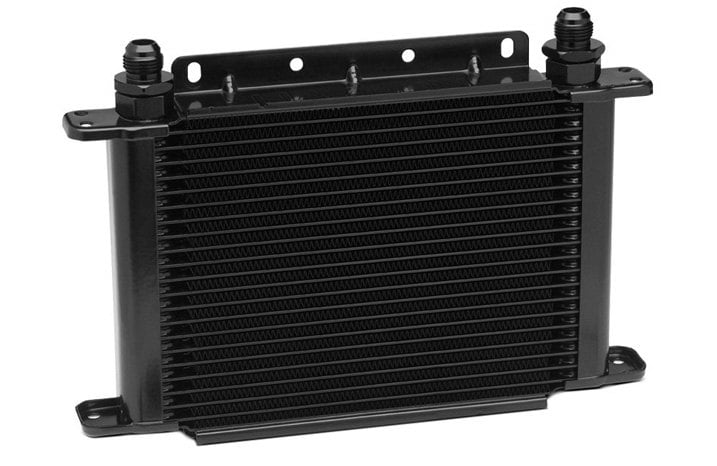
Oil Dipstick
Oil dipstick – a long, thin metal rod used to measure the level of oil in an engine oil pan. This rod sits within a dipstick tube assembly that runs all the way down to the pan.

Oil Filter
Oil filter – a component designed to remove impurities or particles of foreign matter from the engine oil. As the oil leaves the oil pan to begin circulating through the engine block, it first passes through the oil filter where webbed channels catch and hold unwanted debris until the filter is changed during routine maintenance. Oil filters are either the fully-enclosed disposable screw-on type, or the cartridge type which sit inside an enclosed canister.

Oil Pan
Oil pan – a removable part of an engine mounted to the bottom of the cylinder block that serves as the engine's oil reservoir (also known as a sump). At the bottom of the pan is a drain plug which allows oil to be removed during routine maintenance.

Port Fuel Injection (PFI)
Port fuel injection (PFI) – A fuel injection setup where fuel is sprayed into the intake ports to mix with the incoming air inside the intake manifold runners. The air/fuel mixture stays in the runners until an intake valve opens and pulls it into the engine cylinder. Fuel injectors are typically mounted in the intake manifold runners as well.

Positive Crankcase Ventilation (PCV) Valve
Positive crankcase ventilation (PCV) valve – an emissions control check valve in which unburned fuel vapors in the crankcase are discharged back into the engine intake system (usually via the intake manifold) and pass through the cylinders instead of being discharged into the atmosphere. PCV valves are normally replaced as part of periodic maintenance.

Power Steering Pump
Power steering pump – a belt-driven pump driven off the crankshaft pulley which pressurizes steering fluid in order to reduce the amount of effort involved with turning the steering wheel. These pumps are typically bolted to the engine block directly, or by way of a bracket. Some modern vehicles have switched to all-electric power steering pumps.

Secondary Air Injection Pump
Secondary air injection pump – an air pump specifically designed to inject fresh air into the exhaust ports (or a thermal reactor) to achieve more complete combustion of unburned fuel in the exhaust. Normally, the pump will run for approximately one minute after a cold start when the engine isn’t yet hot enough to burn fuel efficiently.

Spark Plug
Spark plug – an electrical conductor inserted into the combustion chamber of an internal combustion engine to ignite the air-fuel mixture. High-tension voltage jumps across a gap formed by two electrodes to create a spark.

Starter
Starter – an electric motor that engages teeth on the engine flywheel (or flex plate) and forces the engine to rotate until it begins to run under its own power.
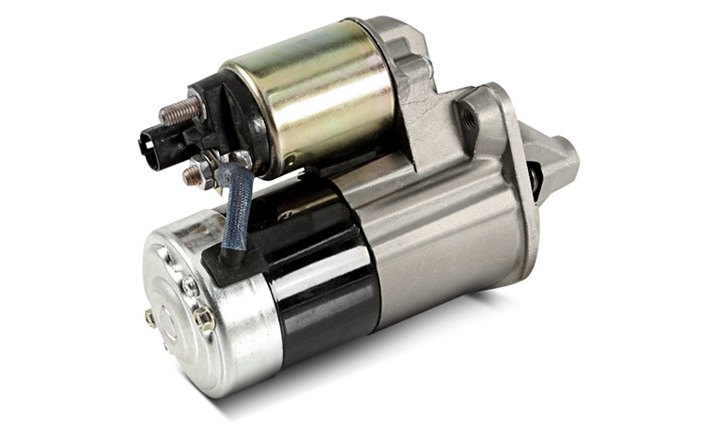
Sump
Sump – see oil pan
Supercharger
Supercharger – a pump that compresses air into a denser charge before it reaches the cylinders. This denser air can be combined with extra fuel to produce a more forceful explosion in the cylinder and boost engine output. Typically, a supercharger is driven mechanically by the engine via a pulley off the camshaft. As such, it is always “on”.

Thermostat
Thermostat – A heat-controlled valve used in an engine’s cooling system to regulate the flow of coolant between the engine and the radiator. Because engines perform more efficiently within a narrow temperature range, the thermostat closes off the coolant flow to the radiator until the engine has reached a pre-determined operating temperature. Smaller thermostats are also used to regulate coolant flowing into the heater core that creates warmth in the cabin, and on automatic choke setups found on older vehicles.

Throttle Body
Throttle body – the section of an engine’s intake system in which the throttle valve (butterfly) is located. Throttle bodies can be controlled by a manual linkage hooked up to the accelerator pedal, or by a computer-controlled servo motor.

Throttle Body Fuel Injection (TBI)
Throttle body fuel injection (TBI) – a type of fuel injection system that injects fuel at the throttle body via one or two injectors.
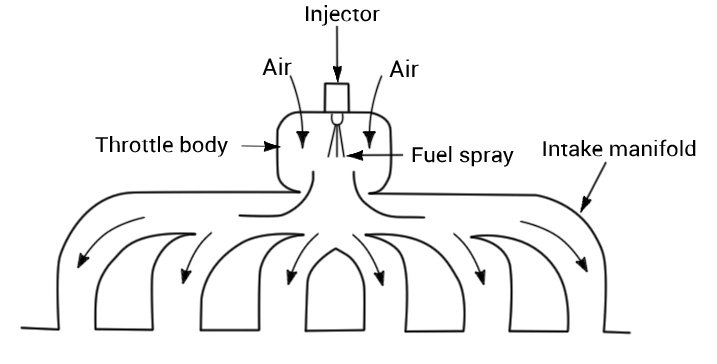
Timing Cover
Timing cover – a specially shaped piece (usually made of metal) that covers and seals timing gears and a timing belt/chain located at the front of the engine.

Trap Oxidizer
Trap oxidizer – found on some diesel engines, this serves a similar role to the gasoline engine catalytic converter. The trap oxidizer features a honeycomb mesh that captures particulates emitted in a diesel’s exhaust, holding them in place until they heat up enough to a burn away completely. Typically, these are mounted right outside the engine.
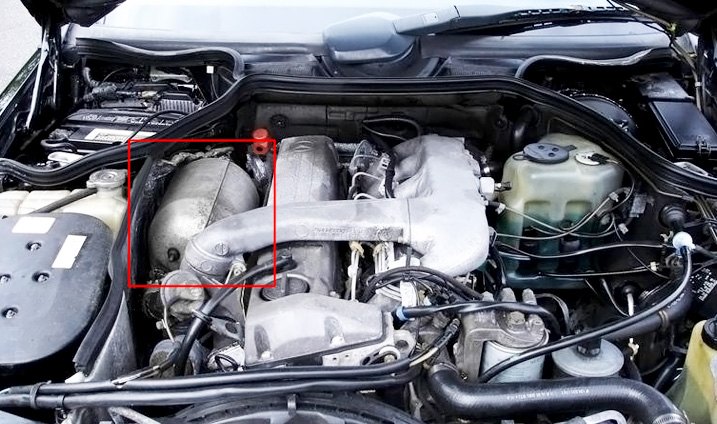
Turbocharger
Turbocharger – a turbine driven by exhaust gases leaving the engine. As the gases are blasted into the turbocharger housing, the outer turbine spins an inner one that serves to compress different, fresh air that’s on its way into the engine. This denser air can be combined with extra fuel to produce a more forceful explosion in the cylinder and boost engine output. A control system (wastegate bypass valve) limits boost pressure to avoid damage.

Unlike a supercharger, a turbo does not consume engine power. Instead, it makes use of otherwise wasted energy in the exhaust stream to increase an engine’s power. Producing almost no extra power at idle, it will ramp up as engine rpms increase.
Vacuum Assist
Vacuum assist – when engine vacuum is used to reduce the driver’s effort in performing functions such as braking via a brake booster. Many engines use vacuum pumps to create or heighten this pressure.


Valley Pan
Valley pan – some V-shaped engines use the space underneath the intake manifold for a coolant passage that runs through the base of the valley between cylinder banks. The valley pan is essentially a manifold piece that covers coolant pipes running through it. A valley pan gasket is used to seal the pan and prevent leaks. Depending on vehicle application, a valley pan cover may be utilized as well.

Water Pump
Water Pump – mounted on the front of the engine and driven by gears or belt, a water pump pressurizes coolant to keep it flowing through the engine block and back to the radiator where it disperses heat.


